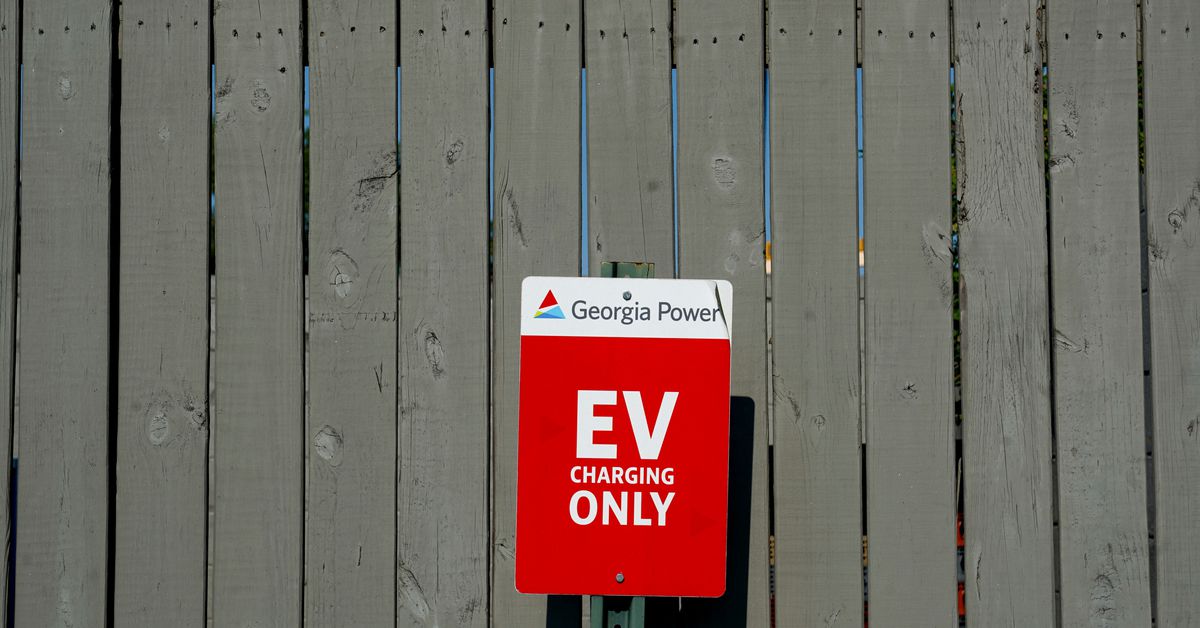/cdn.vox-cdn.com/uploads/chorus_asset/file/25596068/2168114186.jpg)
Let’s get one thing out of the way: contrary to what you may have heard, electric vehicle sales are up.
I know, recent headlines suggest otherwise. Tesla sales are down. Ford is scaling back its EV rollout. General Motors is delaying an electric truck and holding back on investments in EV battery mining. And Hertz is off-loading EVs as its stock price struggles. Automakers across the board are losing millions — some are losing billions — as customer demand appears to have flatlined after an initial burst of excitement. The vibe, as they say, is grim.
And yet, sales are still growing. JD Power is projecting that 1.2 million EVs will be sold in the US by the end of 2024, an increase over 1 million sold last year. That’s 9 percent of total vehicles sold, which has been revised down from a previous prediction of 12 percent.
So, obviously, we got a little over our skis with the whole “the future is electric” thing. And it could still be! In fact, it probably will be — just not as quickly as we originally thought.
“Welcome to the messy middle of the EV evolution,” JD Power says in its EV retail share forecast, released Friday.
So, what’s going on? As automakers continue to refine their strategies, offering a more varied mix of vehicles, including hybrids and plug-in hybrids (PHEVs), things are just getting a lot less predictable. A massive spike in leasing could lead to future EV conversions. Meanwhile, charging remains a pretty massive sticking point for a lot of consumers, who are unwilling to drop so much money on a new car if they don’t feel comfortable about their ability to keep it properly charged.
Overall, an additional 35,000 battery-electric vehicles were sold in the first seven months of 2024 as compared to last year, JD Power says. That includes hybrids and PHEVs, which I think gets at the root of the problem. Those who were expecting an even swap — battery-electric for internal combustion — didn’t anticipate the popularity of hybrids in the market. If anything, hybrids are cannibalizing EV sales, giving the pure-battery electric vehicles more competition than anticipated. But in retrospect, it makes sense. What better response to “range anxiety” than a vehicle that, in a sense, operates as an electric vehicle until the battery runs out, and then switches over to gas?
Environmentalists and pure-play EV enthusiasts will decry the “false promise” of hybrids, but that ignores the psychology of most car shoppers. Most people don’t have the luxury to consider environmental impact alone when purchasing what is often the first- or second-most expensive thing they will ever buy. They also have to worry about price and where they’re going to charge it.
“Welcome to the messy middle of the EV evolution”
EVs are still too expensive, giving potential buyers sticker shock. According to data from Kelley Blue Book, the average transaction price for an electric car in July 2024 was $56,520. Meanwhile, the average gas-powered vehicle is selling at $48,401.
There’s also a depreciation problem. New research out of George Washington University finds that older EVs depreciate in value faster than conventional gas cars. Some even lost 50 percent of their resale value in a single year. The upside is that newer models with longer driving ranges are holding their value better and approaching the retention rates of many gas cars.
The charging experience is still wildly out-of-sync for most people. Either it’s the single most satisfying thing about owning an EV or it’s the worst. And the distinction is usually between people who live in houses and can install a home charger in their garage and those who live in an apartment building or multi-unit housing and have to rely on unreliable public chargers. The former are living the high life, while the latter should probably just get an e-bike.
But JD Power is optimistic about where that’s heading, especially as public satisfaction is growing in both Level 2 and DC fast charging over two consecutive quarters. The Biden administration also continues to make massive investments in public charging, which should slowly ease the experience of public charging from “soul-sucking” to “honestly whatever.”
a:hover]:text-gray-63 [&>a:hover]:shadow-underline-black dark:[&>a:hover]:text-gray-bd dark:[&>a:hover]:shadow-underline-gray [&>a]:shadow-underline-gray-63 dark:[&>a]:text-gray-bd dark:[&>a]:shadow-underline-gray”>Image: Getty
The overall problem when talking about EV trends is the continued dominance of Tesla. For years, it was impossible to talk about sales or charging or anything related to EVs without talking about Tesla, given the company’s overwhelming market share. When overall sales were slowing down, it was largely because Tesla was selling fewer cars. Tesla’s outsize role is distorting how we talk about EVs and likely will for a while longer.
That also could be changing, as more and more models from different companies get added to the mix. Mainstream models, like the Chevy Blazer and Equinox EVs, are starting to get delivered. Hyundai and Kia are promising more affordable models. Even premium pure EV brands like Rivian are expected to offer something that’s cheaper than their current lineup.
Things are still volatile. A Trump victory in November could signal the end of generous tax breaks for manufacturers and consumers, which could slow things down even more. More automakers could get cold feet and scale back more plans. Promising new EVs could just turn out to be vaporware.
It won’t be a walk in the park. Or even a whisper-quiet drive through the countryside, punctuated by fake motor sounds. The industry needs to slow it down with the six-figure, luxury pickups and SUVs and start offering more low-cost compact cars and sedans. And automakers need to react to this moment of profound historical change with a better sense of flexibility and patience. Anything else will be delaying the inevitable.
Services Marketplace – Listings, Bookings & Reviews
